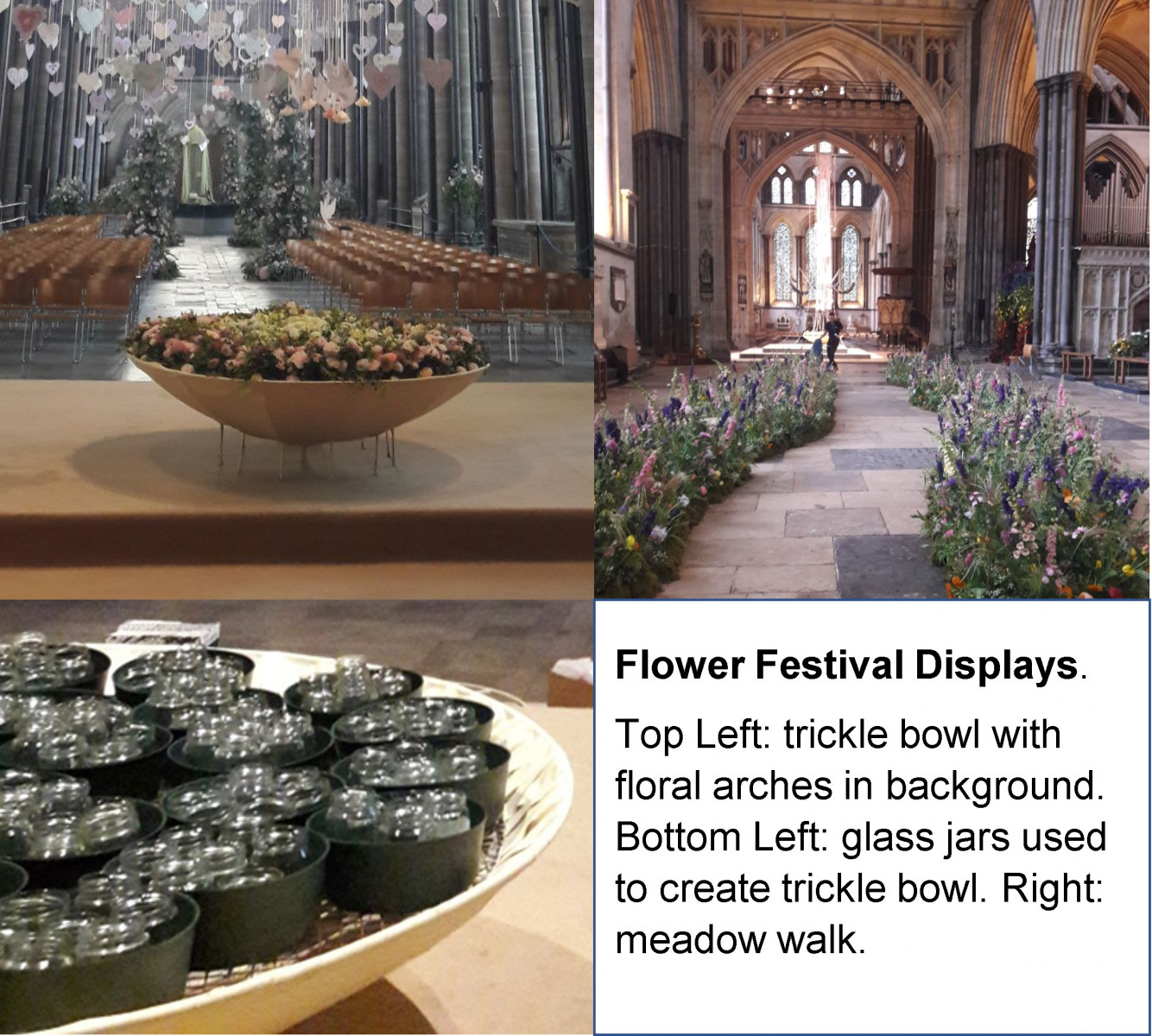Blooming lovely tips to make your church flowers sustainable
Flowers are such a lovely part of church life. But often this beauty can come at a high environmental price through the use of materials such as floral foam and plastic containers.
The fifth Mark of Mission is to strive to safeguard the integrity of creation and sustain and renew the life of the earth, and making church flowers more sustainable is a beautiful way to do this.
Read this blog article from the Church of England, which gathers some of our favourite advice for you in decorating your church.
What's the problem with floral foam?
The creation of floral foam in the 1950s was a milestone in floristry; cheap, convenient and easy to use it revolutionised floral displays. But floral foam is a single-use plastic and the latest science confirms that it is bad for the environment.
Floral foam:
- crumbles easily
- is made from petrochemicals
- disposal in landfill only
- harms aquatic animals
A perfect replacement product does not yet exist and some ‘bio-foams’ which claim to be biodegradable may not only be misleading, but could actually be more harmful to the environment. For more information about floral foam and some of the alternatives available, visit the Sustainable Floristry Network website.
Floristry without floral foam is entirely possible.
It requires us to move away from the more unnatural displays that could be created using floral foam, to embracing the natural shape and form of each stem being used.
This can seem quite daunting at first, but there is help available - Sustainable Church Flowers (SCF) is a movement within the Church of England - 'from the parish' - founded in 2019 in Harpley, Worcestershire.
It is a growing group of friends, passionate about sustainability in our churches, cathedrals and churchyards, who are gently campaigning for change. The SCF website includes resources, events and online demonstrations.
You can find out more about church flowers and sustainability, along with some case studies, on the Eco Church website. Eco Church is a project of A Rocha UK – a charity working for the protection and restoration of the natural world. The project includes a range of resources and initiatives to support and encourage parishes, including the Eco Church Awards Scheme.
Case Study: Salisbury Cathedral
On a much larger scale than most parish churches, Salisbury Cathedral decided to make the move away from using floral foam, as the Administrator of the Cathedral Flowers explains:
“Salisbury Cathedral has now been floral foam free for nearly two years and although it was a huge change and challenge, we are totally committed to the new ways.
For general week by week arranging, we use large green bowls approx. 15” in diameter (or larger) for pedestal arrangements. This will have folded chicken wire in it to give support to stems and sometimes a lead-based pin holder at the base before placing the chicken wire in. All foliage will have all stems stripped on leaves that go below the water line. This ensures the freshness of the water and stops it from going slimy.
When using a larger urn, this will have a much deeper pot, again with use of chicken wire folded into it to give stems support. Foliage stripped that go below the water line.
We have found that we need to order longer length flowers and that foliage is more carefully chosen i.e. if a piece of foliage is required to hang down, this needs to be an arching piece rather than a straight piece that would previously have been angled downwards into foam.
For Advent we have 12 large candle arrangements and a further 4 to make up our Advent crown. Before, when using floral foam, the candle would just be sunk into it. As no foam is used a new method had to be found. We came up with the solution of using our large green bowls, -placed in the centre is an 8” tall glass pot. The Candle is held in the middle of the glass pot by dry sand. Outside the glass pot a donut ring of chicken wire is placed into the empty space of the bowl and taped in.
Other containers such as glass vases of varying shapes and sizes, jam jars, long deep troughs, and metal frames again with deep pots and or glass tubes have given us more opportunities and stretches our imaginations.
We have found that our flowers and foliage are lasting longer as they are fully in water and not in a block of foam. Our watering teams top the bowls up at regular intervals during the week and with a good spray of water.
Earlier this year (2022) we had a very successful flower festival totally without floral foam. Thousands of jam jars were collected and used to create a meadow to walk through, along with hundreds of test tubes used on various structures of wood or metal. 3 x 4.5-metre-tall arches were in the nave, each had long thin buckets and with use of chicken wire were crammed with foliage and flowers creating stunning effects. “

